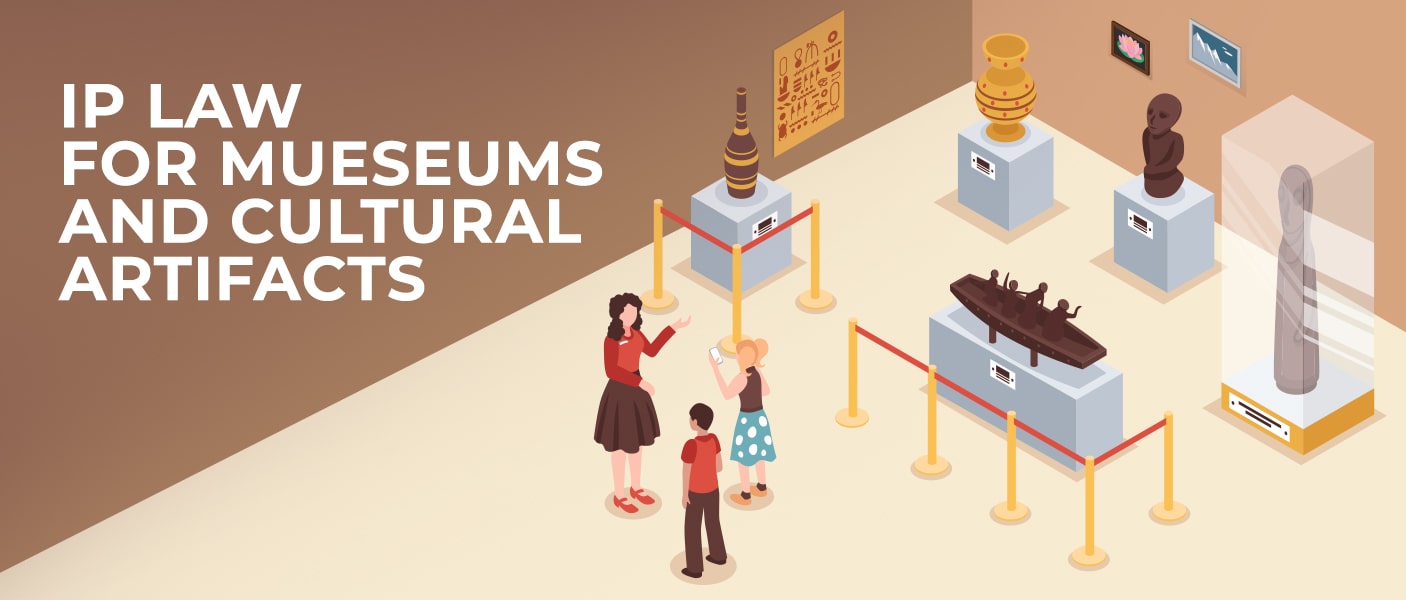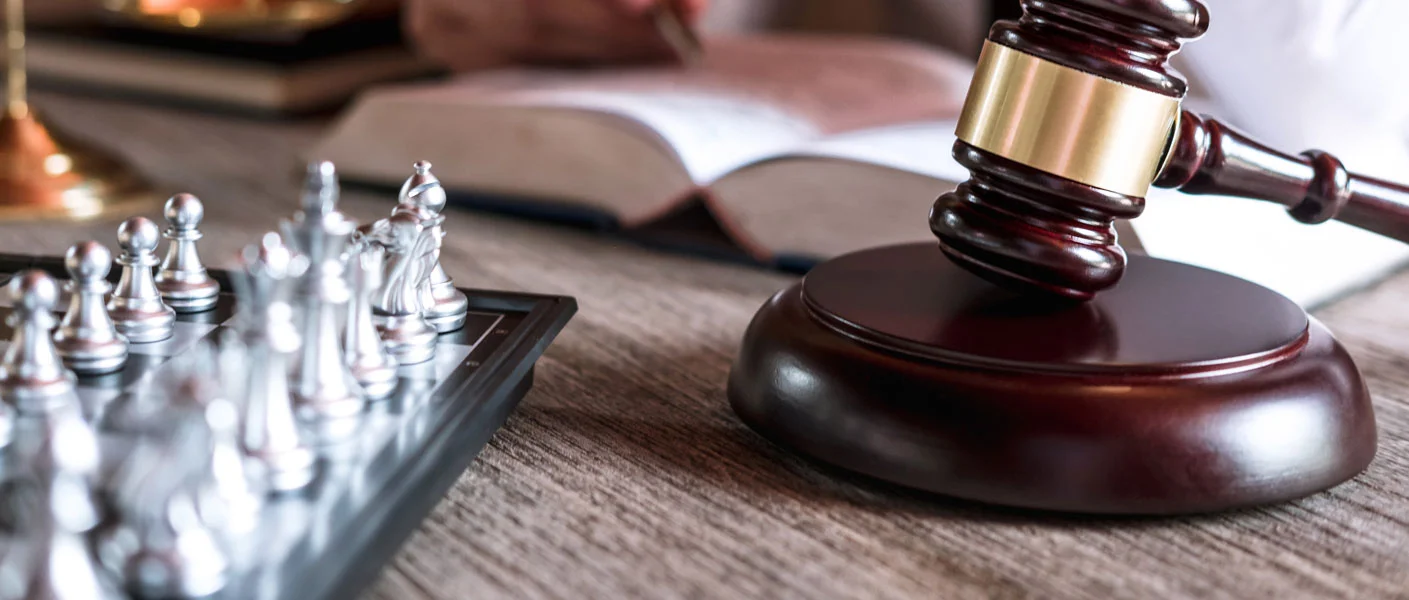IP Law For Museums and Cultural Artifacts
September 25, 2024 By Sonal BhattMuseums have long been the custodians of cultural heritage, preserving history and showcasing artifacts that reflect the rich diversity of human civilization. In India, a country with a rich cultural and historical background, museums house numerous objects of national importance, ranging from ancient manuscripts to modern art. Our rich & diverse cultural heritage is protected actively by Intellectual Property Rights.
However, the advent of intellectual property (IP) law and its interaction with cultural artifacts has posed unique challenges for museums, artists, and governments alike. This blog explores the complexities of IP law in relation to museums and cultural artifacts, particularly from an Indian perspective.
Understanding Intellectual Property and Cultural Heritage
Intellectual Property (IP) law protects the creations of the human mind, giving the creator exclusive rights over their inventions, artistic works, designs, and symbols. However, when it comes to cultural artifacts housed in museums, the application of IP law becomes complex due to the communal ownership and historical nature of many artifacts.
Cultural artifacts often have no clear, identifiable creator and may have been crafted centuries ago by unknown artisans. This brings up questions about who holds the rights to such artifacts, especially when they are displayed in public museums. In many cases, these artifacts are seen as part of the nation’s heritage, making it difficult to assign individual ownership under current IP laws.
Types of IP Rights Relevant to Museums
In India, the IP laws that could be applicable to museums and their collections are:
1. Copyright Law (Copyright Act, 1957)
2. Trademark Law (Trademarks Act, 1999)
3. Designs Law (Designs Act, 2000)
4. Patent Law (Patents Act, 1970)
5. Geographical Indications (Geographical Indications of Goods Act, 1999)
1.Copyright Law and Museums
Copyright protection applies to "original literary, dramatic, musical and artistic works." In the context of museums, artistic works like paintings, sculptures, and even digital reproductions of artifacts fall under the purview of copyright law.
For artifacts, which are centuries old, copyright protection may not be applicable since copyright typically lasts for the lifetime of the author plus 60 years posthumously in India. However, the issue arises when museums digitize their collections, create replicas, or publish books, postcards, and merchandise based on these works. In these cases, the museum may own the copyright to these derivative works, thus protecting their economic interests.
For example, the Indian Museum in Kolkata may not own the copyright to an ancient manuscript, but if it publishes a reproduction of that manuscript, it can claim copyright over the reproduction.
2.Trademark Law
Museums in India may also protect their names, logos, and even specific exhibitions under trademark law. Trademarks offer a means of safeguarding the brand identity of museums. For example, the logo of the National Museum in New Delhi can be registered as a trademark, preventing unauthorized use.
This is particularly important in a world where museums are increasingly commercializing their collections through merchandise, exhibition tours, and digital offerings. By securing trademarks, museums ensure that their brand and reputation are not exploited by third parties.
3.Designs Law
Artifacts such as jewelry, textiles, or pottery, which have distinctive aesthetic designs, may be protected under the Designs Act. Museums can register the design of an artifact, particularly if they plan to create replicas or use the design in modern commercial contexts.
For example, a unique pattern from an ancient textile exhibited at the Calico Museum of Textiles in Ahmedabad may be protected under designs law if it is intended to be replicated in a contemporary fashion line.
4.Geographical Indications
Geographical Indications (GIs) protect products that have a specific geographical origin and possess qualities or reputations due to that origin. India has several handicrafts, textiles, and traditional arts registered under GIs, such as Banarasi sarees or Madhubani paintings.
Museums that hold artifacts representing these traditional art forms can help protect and promote them by ensuring that only products genuinely originating from those regions are marketed under the name of the geographical indication. This prevents the dilution of cultural heritage through mass-produced imitations.
The Legal and Ethical Complexities of Ownership
One of the main challenges Indian museums face is the issue of ownership and repatriation of cultural artifacts. Historically, many valuable cultural artifacts were taken from India during colonial times and now reside in foreign museums. Examples include the Kohinoor diamond in the British Crown Jewels or the Saraswati statue in the UK.
Internationally, the demand for the return of these artifacts has grown louder, and IP laws often intersect with these debates. From a legal standpoint, artifacts acquired before modern IP laws came into existence create a grey area. Museums argue that returning these objects to their countries of origin would cause them to lose their cultural and educational significance. On the other hand, there is growing pressure from governments, including the Indian government, for the restitution of such objects.
In India, the Antiquities and Art Treasures Act, 1972, governs the protection of cultural property. It mandates that any antique, which is over 100 years old, requires a permit for its sale, acquisition, or movement. The law is designed to protect the country's cultural heritage from being sold or taken abroad illegally.
Digitalization and IP Issues in Museums
The digital age has ushered in a new era for museums, with many creating online galleries, virtual tours, and digitizing their collections. However, this also brings forth fresh intellectual property challenges. Museums must navigate the balance between making their collections widely accessible and protecting their IP rights.
In India, the National Virtual Library of India is one such initiative aimed at digitizing India’s cultural artifacts. However, the digitization process creates new IP rights over these digital versions, making it imperative for museums to establish clear IP policies to govern the use of these digital artifacts.
For example, if a user accesses a high-resolution image of a painting from a museum's online archive, the question arises: Does the user have the right to reproduce that image? Can they use it commercially? Indian museums, like their international counterparts, need to enforce their copyright over digital reproductions while ensuring that public access to knowledge is not unduly restricted.
A Path Forward for IP and Museums in India
The interaction between intellectual property law and cultural artifacts presents both opportunities and challenges for museums in India. While IP laws can be used to protect the economic interests of museums through copyrights, trademarks, and designs, there is also an ethical dimension to how these laws are applied, especially regarding public access and the ownership of cultural heritage.
Museums need to adopt forward-thinking IP policies that recognize the communal nature of many cultural artifacts while also protecting their economic interests in digital and physical reproductions. With initiatives like the National Mission on Monuments and Antiquities, India is taking steps towards better management of its cultural heritage.
In the digital age, museums must also consider how to protect and share their collections responsibly, striking a balance between accessibility and protection. The future of museums in India will depend on how well they navigate the intricacies of IP law while staying true to their mission of preserving and promoting cultural heritage.
As Indian museums continue to evolve, understanding and leveraging intellectual property law effectively will be key to safeguarding their collections and ensuring the long-term sustainability of these vital cultural institutions.






